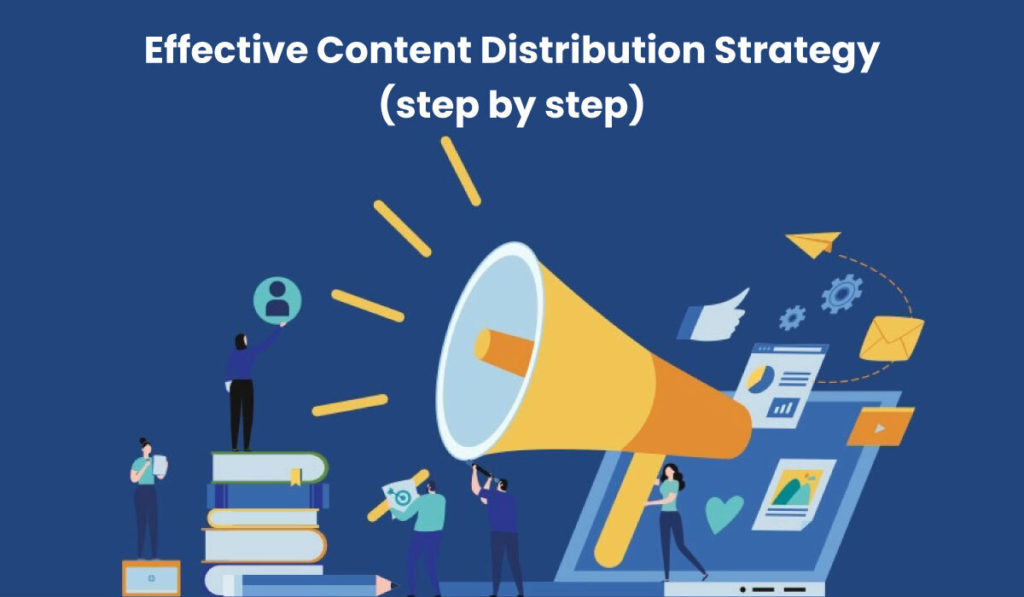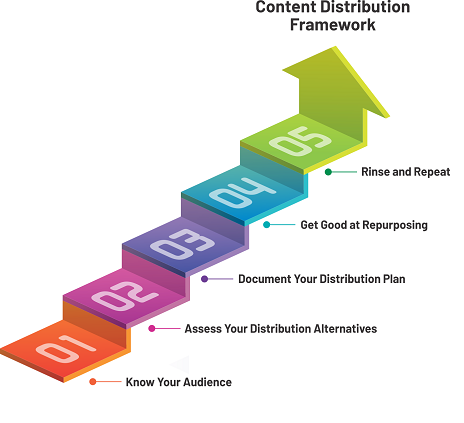In the fast-paced world of digital marketing and SEO, content distribution plays a pivotal role in increasing brand visibility, driving organic traffic, and achieving content marketing goals.
As an SEO content writer, mastering the art of balancing multiple content distribution goals is essential for maximizing your reach and impact.
In this in-depth blog, we will explore effective strategies and best practices to achieve a harmonious distribution of your content across various platforms, while focusing on the keyword “How can you balance multiple content distribution goals?
What Is Content Distribution?

Content distribution involves the strategic dissemination of your content across different platforms and channels to connect with a broader audience. It is a fundamental aspect of content marketing that aims to amplify your content’s reach and engagement beyond your website.
An effective content distribution strategy ensures your content is discovered by the right audience, leading to increased brand exposure and higher conversion rates.
The Benefits of Content Distribution:
- Expands your brand’s reach to a wider audience.
- Increases the chances of your content going viral and gaining momentum.
- Enhances brand authority and credibility by reaching diverse platforms.
- Drives organic traffic to your website, boosting SEO efforts.
- Encourages user engagement and interactions across multiple channels.
Steps to Develop an Effective Content Distribution Strategy

To achieve success in content distribution, a well-thought-out strategy is essential. Follow these steps to develop an effective content distribution plan:
1. Define Your Target Audience:
Identifying your target audience is the first step in building a successful content distribution strategy. Conduct thorough research to understand their preferences, interests, pain points, and preferred platforms.
Use analytics, surveys, and customer feedback to create buyer personas that represent your ideal audience segments.
2. Set Specific and Measurable Goals:
Clearly outline your content distribution goals, making them specific and measurable. Whether it’s increasing website traffic, generating leads, or boosting brand awareness, having well-defined objectives will keep your strategy on track.
Use key performance indicators (KPIs) like website traffic, conversion rates, and social media engagement to measure the success of each goal.
3. Select the Right Content Formats:
Different content formats resonate with different audience segments. Consider creating blog posts, videos, infographics, podcasts, and more to cater to diverse preferences. Leverage multimedia content to keep your distribution strategy fresh and engaging.
4. Identify Relevant Distribution Channels:
Choose distribution channels that align with your target audience and content type. Social media platforms like Facebook, Twitter, LinkedIn, and Instagram are popular options, along with email marketing, guest posting, and influencer collaborations. Consider using paid advertising on relevant platforms to boost visibility and reach.
5. Create a Content Calendar:
A well-structured content calendar helps you plan and organize your content distribution efforts. Schedule content releases across various platforms to maintain consistency and engagement. Use tools like Trello, Asana, or Google Calendar to manage your content schedule effectively.
6. Measure and Analyze Performance:
Regularly monitor the performance of your content distribution efforts. Analyze website traffic, social media engagement, conversion rates, and other relevant metrics to evaluate your strategy’s effectiveness. Use data-driven insights to make informed decisions and optimize your content distribution approach.
How to Refine Your Existing Content Distribution Strategy

If you already have a content distribution strategy in place, here’s how you can refine and optimize it for better results:
1. Data-Driven Analysis:
Utilize analytics tools and customer feedback to gain insights into the performance of your existing strategy. Identify strengths, weaknesses, and areas for improvement. Look for patterns in user behavior and preferences to fine-tune your approach
2. Stay Agile and Adapt:
The digital landscape is ever-changing. Stay informed about industry trends, platform updates, and changes in audience behavior to adapt your strategy accordingly. Embrace a growth mindset that welcomes experimentation and continuous improvement.
3. Test New Approaches:
Experiment with new content formats, distribution channels, and promotional techniques. A/B tests your strategies to understand what resonates best with your audience. Consider split-testing email subject lines, social media ad creatives, or video thumbnails to optimize performance.
4. Optimize for Mobile:
With mobile users comprising a significant portion of internet traffic, ensure your content is optimized for mobile devices to enhance user experience. Employ responsive design, fast-loading pages, and mobile-friendly formats to cater to on-the-go audiences.
5. Leverage Automation:
Automation tools can streamline your content distribution efforts and save time. Schedule social media posts in advance using platforms like Hootsuite or Buffer. Use email marketing automation to deliver personalized content to your subscribers based on their behavior and preferences.
Content Distribution Platforms

To effectively distribute your content, leverage a mix of platforms:
1. Social Media Channels:
Engage with your audience through Facebook, Twitter, LinkedIn, Instagram, and Pinterest. Tailor your content for each platform’s format and audience expectations. Use a mix of visual content, hashtags, and calls-to-action to encourage interaction and sharing.
2. Email Marketing:
Utilize email newsletters to nurture leads, share valuable content, and drive traffic back to your website. Personalize your emails, segment your subscriber list, and deliver content that aligns with your distribution goals.
3. Guest Posting:
Publish articles on relevant industry websites to tap into new audiences and build authority in your niche. Focus on providing high-quality, valuable content that demonstrates your expertise.
4. Content Syndication:
Partner with content syndication platforms to reach wider audiences and increase brand exposure. Syndication platforms can amplify your content’s reach by distributing it to various publishers and platforms.
5. Influencer Marketing:
Collaborate with influencers and industry experts to extend your content’s reach and credibility. Partner with influencers whose audience aligns with your target market to ensure maximum impact.
6. Video Hosting Platforms:
Capitalize on the popularity of video content by hosting videos on platforms like YouTube or Vimeo. Optimize video titles, descriptions, and tags to improve discoverability and search engine rankings.
Struggling to Refine Your Content Distribution Strategy?

If you find challenges in balancing multiple content distribution goals, consider the following:
1. Seek Expert Assistance:
Consult with experienced marketers or agencies to gain valuable insights and guidance. An outside perspective can provide fresh ideas and uncover untapped opportunities.
2. Join Industry Forums and Networking Groups:
Engage with like-minded professionals to exchange ideas, share experiences, and learn from others’ successes. Networking can lead to valuable collaborations and partnerships.
3. Attend Conferences and Workshops:
Participate in industry events to stay updated with the latest trends and best practices in content distribution. Conferences and workshops offer valuable learning opportunities and opportunities to connect with industry thought leaders.
Key principles in mind:
Remember that content distribution is not a one-size-fits-all approach. It requires continuous monitoring, analysis, and adjustment based on real-time data and user feedback. As you refine your content distribution strategy, keep the following key principles in mind:
Personalization: Tailor your content for different segments of your audience. Use data to understand their preferences, behavior, and needs, and create content that resonates with each group.
Consistency: Maintain a consistent presence across your chosen distribution channels. Regularly publish fresh content, engage with your audience, and respond to their queries and comments promptly.
Quality Over Quantity: Focus on producing high-quality content that offers real value to your audience. A few impactful pieces will yield better results than a flood of mediocre content.
Collaboration: Partner with other brands, influencers, or industry experts to co-create and distribute content. Collaboration can introduce your content to new audiences and build valuable connections in your industry.
User-Generated Content (UGC): Encourage your audience to create and share content related to your brand. UGC adds authenticity and social proof to your content distribution efforts.
Learn from Analytics: Regularly analyze the performance of your content distribution efforts. Pay attention to metrics such as click-through rates, engagement rates, conversion rates, and time on page. Use this data to identify what works well and what needs improvement.
Agile Adaptation: Be prepared to adapt your strategy as market trends, platform algorithms, and consumer behavior change. Flexibility is key to staying relevant in the ever-evolving digital landscape.
By adhering to these principles and following the strategies outlined in this blog, you’ll be better equipped to balance multiple content distribution goals effectively. Whether you are a solopreneur or part of a large marketing team, a well-researched and data-driven content distribution strategy will yield significant results in reaching your target audience and achieving your business objectives.Remember, content distribution is not a one-time task; it’s an ongoing process that requires dedication and continuous improvement. Be patient, stay persistent, and keep learning from both successes and setbacks. Over time, you’ll develop a finely tuned content distribution strategy that maximizes your brand’s visibility, engages your audience, and drives meaningful results.
Conclusion:
In conclusion, the world of content distribution is vast and dynamic, but with the right approach and strategies, you can navigate it successfully. Identify your primary goal and align your efforts accordingly. Utilize various content distribution platforms, including social media, email marketing, guest posting, and video hosting, to diversify your reach. Analyze data, refine your strategy, and leverage automation to streamline your efforts.
As you embark on your content distribution journey, keep the keyword “how can you balance multiple content distribution goals” at the forefront of your strategy. By staying focused on this question and implementing the techniques outlined in this blog, you’ll position yourself for success in the ever-evolving world of content marketing and SEO.
Remember, content distribution is an art that requires creativity, adaptability, and a deep understanding of your audience. Stay committed to providing value through your content, and you’ll find your brand’s reach and influence expanding far beyond your expectations. Happy content distribution!
FAQs
1. Is it possible to balance multiple content distribution goals without compromising the quality of content?
Yes, it is possible to balance multiple content distribution goals while maintaining high-quality content. The key lies in understanding your target audience and creating content that addresses their needs, interests, and pain points.
By aligning your content with your primary goal and ensuring consistency, you can effectively distribute valuable content across various channels without sacrificing quality.
2. How can I prioritize my content distribution goals when they seem equally important?
When faced with multiple content distribution goals, prioritize them based on their alignment with your business objectives and potential impact on your overall strategy. Identify your primary goal—the one that directly contributes to your main business objective—and focus on it first.
Secondary goals should complement the primary goal and support your overall marketing strategy.
3. How do I know if my content distribution strategy is effective?
Measuring the effectiveness of your content distribution strategy requires tracking key performance indicators (KPIs) related to your goals. Monitor metrics such as website traffic, click-through rates, social media engagement, lead generation, and conversion rates.
Regularly analyze the data to identify trends, successes, and areas for improvement, which will help you refine your strategy and achieve better results.
4. Can I apply the same content distribution strategy to all platforms?
While some elements of your content distribution strategy may apply universally, it’s essential to tailor your approach to each platform and its audience. Different platforms have distinct user demographics and preferences, so consider customizing content formats, tones, and delivery methods accordingly.
This personalized approach will improve engagement and resonate better with users on each platform.
5. How can I effectively manage content distribution across multiple platforms without feeling overwhelmed?
Balancing content distribution across various platforms can be challenging, but using organization tools and automation can help streamline the process. Utilize content management systems, scheduling tools, and automation software to plan and publish content efficiently.
Additionally, delegate responsibilities among team members or consider outsourcing content distribution tasks to a trusted partner, which can lighten your workload and improve overall efficiency.




